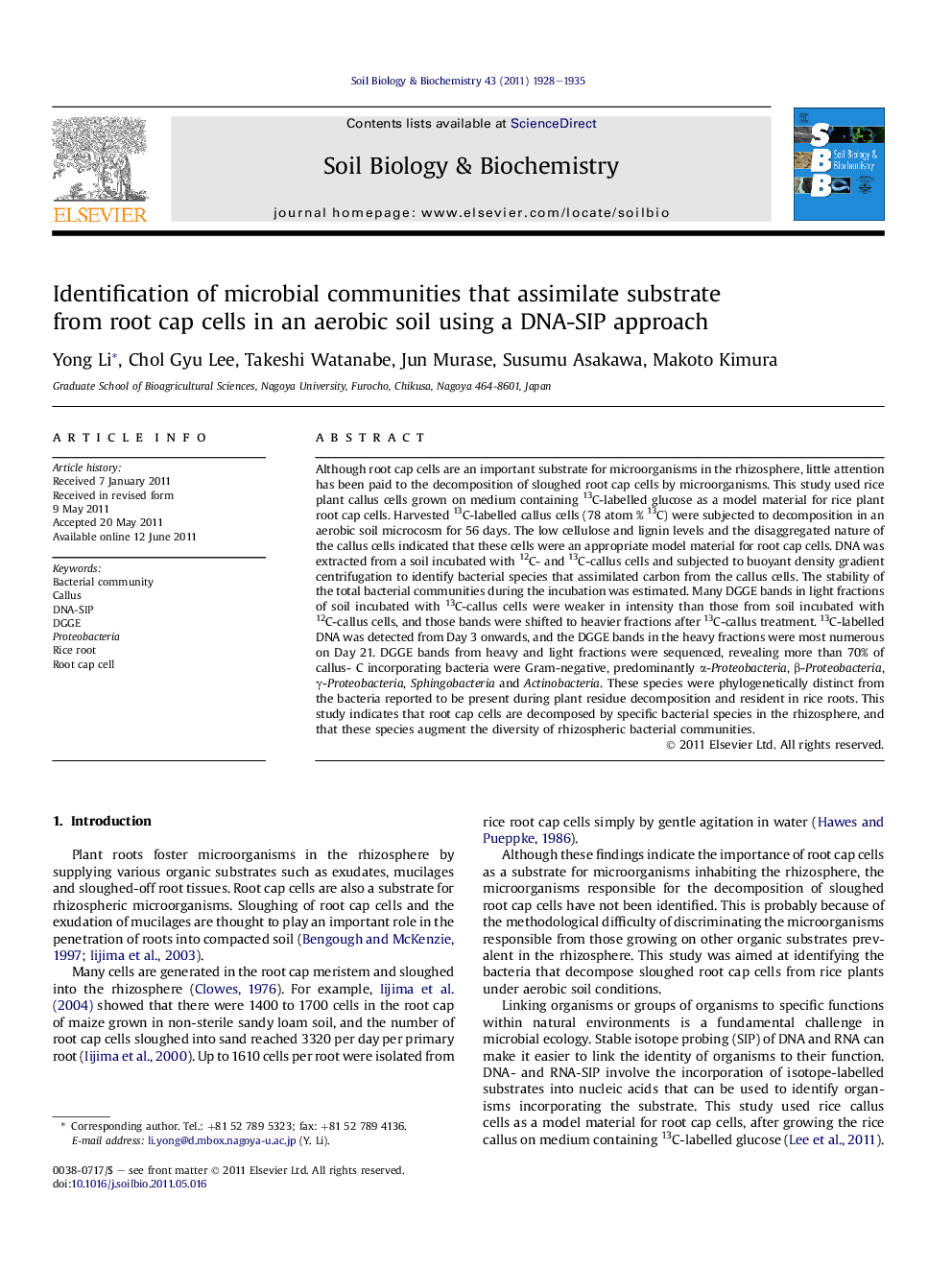| Article ID | Journal | Published Year | Pages | File Type |
|---|---|---|---|---|
| 2025253 | Soil Biology and Biochemistry | 2011 | 8 Pages |
Although root cap cells are an important substrate for microorganisms in the rhizosphere, little attention has been paid to the decomposition of sloughed root cap cells by microorganisms. This study used rice plant callus cells grown on medium containing 13C-labelled glucose as a model material for rice plant root cap cells. Harvested 13C-labelled callus cells (78 atom % 13C) were subjected to decomposition in an aerobic soil microcosm for 56 days. The low cellulose and lignin levels and the disaggregated nature of the callus cells indicated that these cells were an appropriate model material for root cap cells. DNA was extracted from a soil incubated with 12C- and 13C-callus cells and subjected to buoyant density gradient centrifugation to identify bacterial species that assimilated carbon from the callus cells. The stability of the total bacterial communities during the incubation was estimated. Many DGGE bands in light fractions of soil incubated with 13C-callus cells were weaker in intensity than those from soil incubated with 12C-callus cells, and those bands were shifted to heavier fractions after 13C-callus treatment. 13C-labelled DNA was detected from Day 3 onwards, and the DGGE bands in the heavy fractions were most numerous on Day 21. DGGE bands from heavy and light fractions were sequenced, revealing more than 70% of callus- C incorporating bacteria were Gram-negative, predominantly α-Proteobacteria, β-Proteobacteria, γ-Proteobacteria, Sphingobacteria and Actinobacteria. These species were phylogenetically distinct from the bacteria reported to be present during plant residue decomposition and resident in rice roots. This study indicates that root cap cells are decomposed by specific bacterial species in the rhizosphere, and that these species augment the diversity of rhizospheric bacterial communities.
► No attention has been paid to microorganisms decomposing sloughed root cap cells in the rhizosphere. ► We used 13C-labelled callus cells of rice plant to elucidate bacterial communities decomposing root cap cells by a DNA-SIP approach. ► 13C-labelled DNA in heavy fractions was detected from day 3 onwards during 56-d incubation in aerobic soil microcosm. ► Many DGGE bands in light-density fractions of 12C-callus treatment were shifted to heavier fractions for 13C-callus treatment. ► The majority of callus-C assimilating bacteria were Gram-negative and were dominated by α- and γ-Proteobacteria, Sphingobacteria and Actinobacteria.
